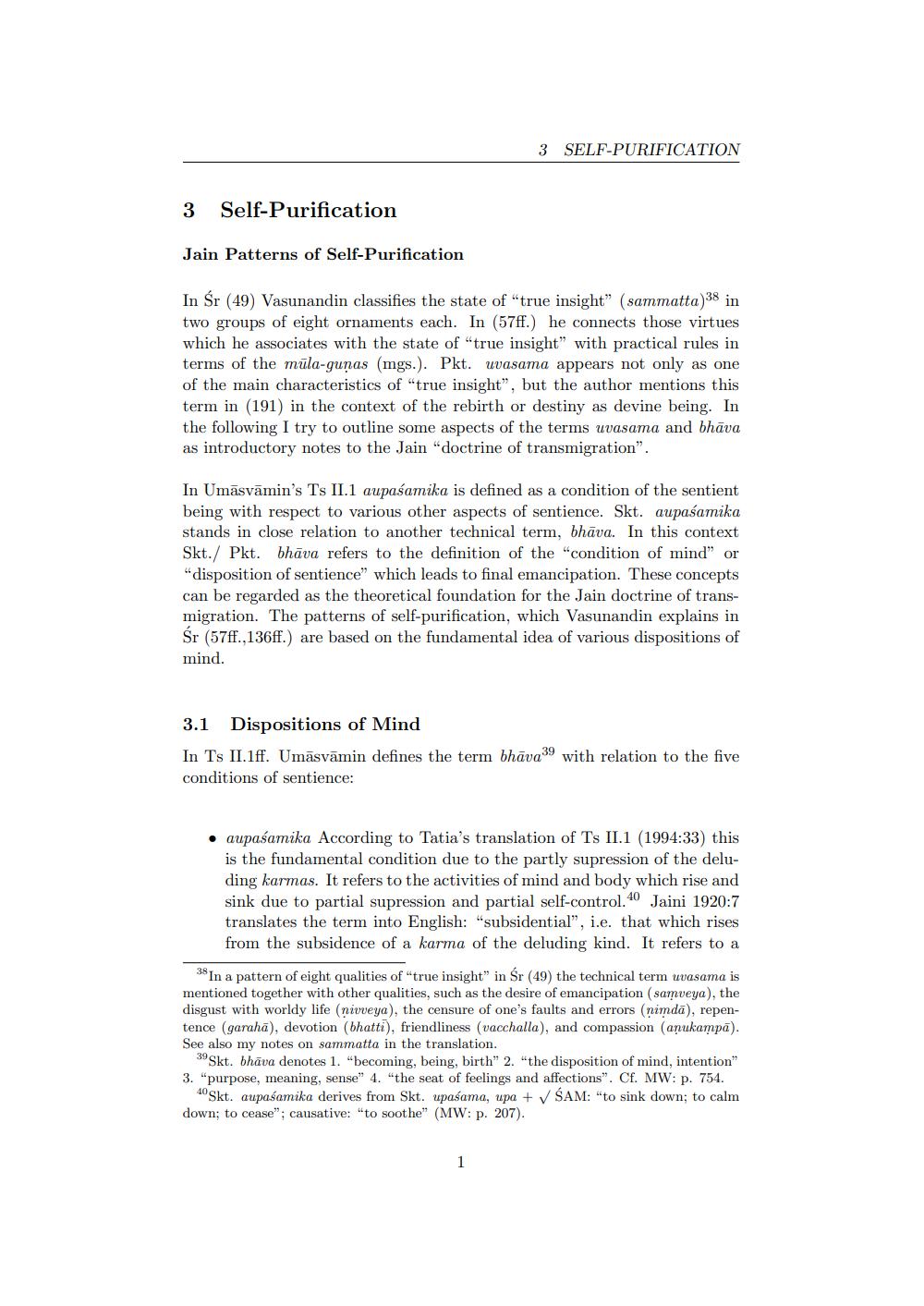________________
3 Self-Purification
Jain Patterns of Self-Purification
3 SELF-PURIFICATION
In Śr (49) Vasunandin classifies the state of "true insight" (sammatta)38 in two groups of eight ornaments each. In (57ff.) he connects those virtues which he associates with the state of "true insight" with practical rules in terms of the mula-gunas (mgs.). Pkt. uvasama appears not only as one of the main characteristics of "true insight", but the author mentions this term in (191) in the context of the rebirth or destiny as devine being. In the following I try to outline some aspects of the terms uvasama and bhava as introductory notes to the Jain "doctrine of transmigration".
In Umasvamin's Ts II.1 aupaśamika is defined as a condition of the sentient being with respect to various other aspects of sentience. Skt. aupaśamika stands in close relation to another technical term, bhava. In this context Skt./ Pkt. bhāva refers to the definition of the "condition of mind" or "disposition of sentience" which leads to final emancipation. These concepts can be regarded as the theoretical foundation for the Jain doctrine of transmigration. The patterns of self-purification, which Vasunandin explains in Śr (57ff.,136ff.) are based on the fundamental idea of various dispositions of mind.
3.1
Dispositions of Mind
In Ts II.1ff. Umasvamin defines the term bhava 39 with relation to the five conditions of sentience:
aupaśamika According to Tatia's translation of Ts II.1 (1994:33) this is the fundamental condition due to the partly supression of the deluding karmas. It refers to the activities of mind and body which rise and sink due to partial supression and partial self-control.40 Jaini 1920:7 translates the term into English: "subsidential", i.e. that which rises from the subsidence of a karma of the deluding kind. It refers to a
38 In a pattern of eight qualities of "true insight" in Śr (49) the technical term uvasama is mentioned together with other qualities, such as the desire of emancipation (samveya), the disgust with worldy life (nivveya), the censure of one's faults and errors (nimdā), repentence (garaha), devotion (bhatti), friendliness (vacchalla), and compassion (aṇukampā). See also my notes on sammatta in the translation.
39 Skt. bhāva denotes 1. "becoming, being, birth" 2. "the disposition of mind, intention" 3. "purpose, meaning, sense" 4. "the seat of feelings and affections". Cf. MW: p. 754. 40 Skt. aupaśamika derives from Skt. upasama, upa +✓ SAM: "to sink down; to calm down; to cease"; causative: "to soothe" (MW: p. 207).
1




